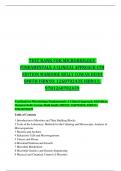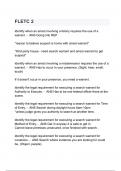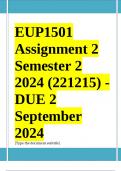Exam (elaborations)
Test Bank - Bates Guide To Physical Examination and History Taking, 13th Edition (Bickley, 2021), Chapter 1-20 | All Chapters with Questions and Answers
- Course
- Institution
Test Bank - Bates Guide To Physical Examination and History Taking, 13th Edition (Bickley, 2021), Chapter 1-20 | All Chapters with Questions and Answers REF: p. 741 MSC: Client Needs: Health Promotion and Maintenance 13. A 50-year-old woman calls the clinic because she has noticed some changes i...
[Show more]








